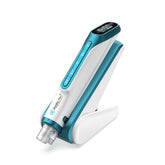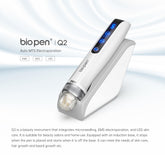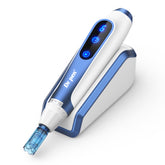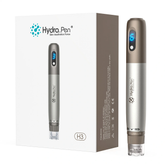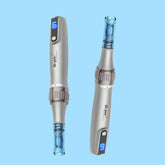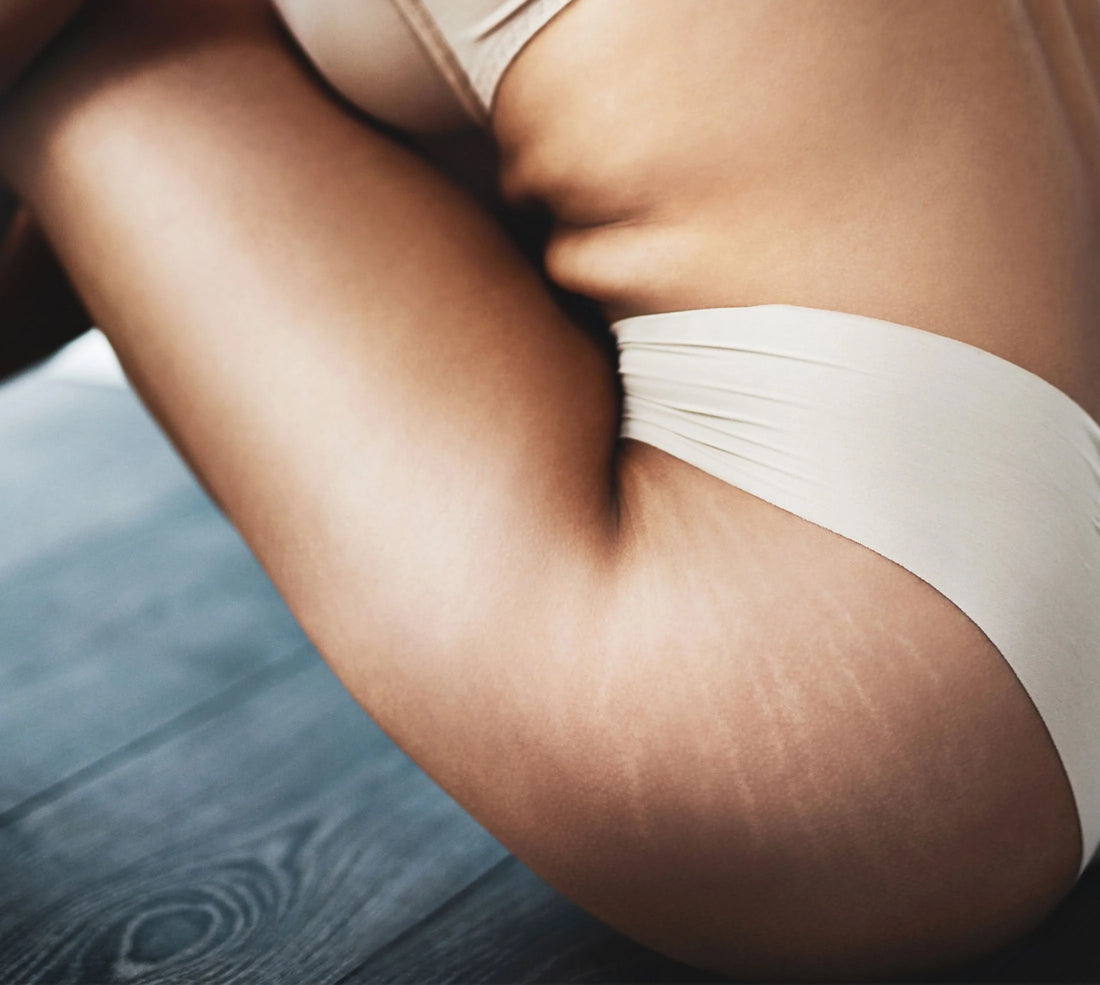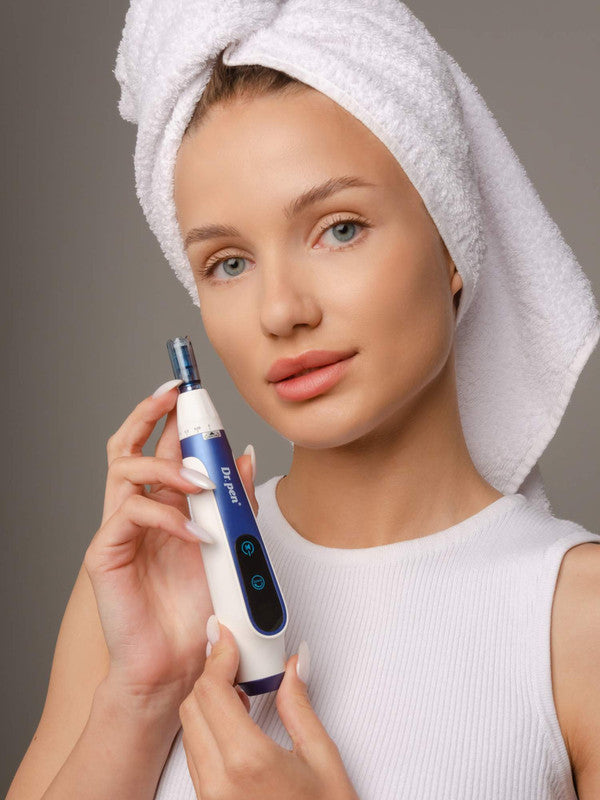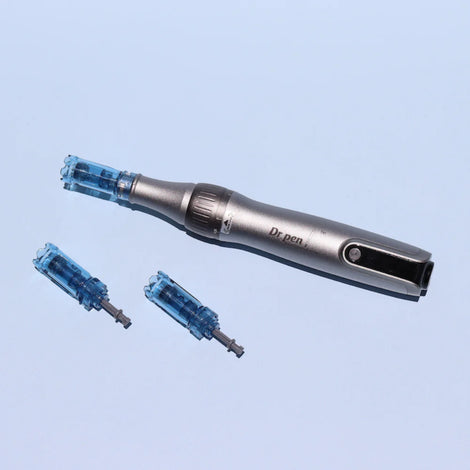If you’ve got stretch marks, you’re not alone! It’s estimated that up to 90% of women have them.
Stretch marks are certainly nothing to be embarrassed about, however many people may feel self-conscious about their stretch marks and wish to get rid of them. Whilst some stretch marks can’t be fully erased, there are steps that can be taken to reduce their appearance.
What are stretch marks?
A stretch mark is a type of scar, occurring when our skin stretches and shrinks quickly. They’re often developed during growth spurts of puberty, on the belly during pregnancy and in cases where someone loses weight rapidly, and the skin struggles to keep up.
The stretch mark develops when the abrupt change to the surface area of the skin causes the collagen and elastin supporting our skin to rupture. When the collagen fibers snap, the blood vessels underneath the skin become more noticeable and present as pink or purple marks.
As the skin heals, it can heal unevenly, causing a textural difference which we see as a stretch mark. The pink and purple hue of a fresh stretch mark will fade over time and appear as a white or silver scar.
Not everyone develops stretch marks and medical research indicates that fluctuating hormone levels may play a role, as well as genetics.
Stretch marks can appear on any area where fat is stored, such as your hips, arms, thighs, breasts and buttocks.
How to get rid of stretch marks
Many creams and lotions on the market that claim to reduce stretch marks, and these have varying results in reducing the appearance of stretch marks (and generally work best when applied to very new stretch marks, rather than established stretch marks).
When it comes to topical creams, research indicates two main ingredients that are most effective in reducing the appearance of stretch marks - tretinoin and hyaluronic acid.
Tretinoin is a prescription-strength retinoid that is most commonly used for anti-ageing and hyaluronic acid helps to intensely hydrate the skin. Again, these are best applied to stretch marks when the scars are freshly developed.
Dermatologists generally recommend a range of procedures to make stretch marks less obvious. These treatments include chemical peels, laser therapy, radiofrequency, ultrasound, microneedling and microdermabrasion.
Can skin needling get rid of stretch marks permanently?
Although some stretch marks can be stubborn (depending on your skin type, other skin concerns and how long the stretch marks have been there), the appearance of most stretch marks can be greatly reduced with the right treatments.
For those looking to diminish their stretch marks, some dermatologists recommend microneedling as the best treatment option available. Dr. Manish Shah MD, a Colorado-based cosmetic surgeon, confirmed the efficacy of skin needling for stretch marks.
"...the single best treatment for stretch mark reduction is microneedling. Microneedling improves the color and appearance of stretch marks by creating tiny pinhole injuries in the stretch mark itself,”
Skin needling for stretch marks
Skin needling, a.k.a. microneedling is a great way to treat stretch marks. Micro needling works by a series of very tiny, thin needles rolling across the skin using a microneedling pen.
The needles create a series of microchannels (microscopic puncture marks), which tricks the skin into thinking that there is mild trauma. The skin responds by producing a healing response, including increasing the production of collagen and elastin. In this way, microneedling triggers the skin to heal itself and improve its condition.
As stretch marks are caused by disruptions and ruptures of collagen and elastin bonds in the skin, it makes sense to treat them using microneedling to restore concentration of collagen and elastin in the area.
During the microneedling process, the microchannels allow any skincare products and active ingredients to have up to greater penetration. After microneedling, we recommend using hyaluronic acid to flood the tissue with hydration and moisture, which will help speed up the skin’s natural healing process.
And when you consider that hyaluronic acid is a key ingredient that has been recognised for its ability to help promote the healing of stretch marks, it makes microneedling even more effective for reducing stretch marks’ appearance.
Skin needling can leave the skin looking temporarily a little irritated, however for many people, since stretch marks are often on the body in areas that can be hidden by clothing, there needn’t be any downtime.
Using a derma roller for stretch marks
Using a derma roller can yield similar results to microneedling and derma rolling is indeed still a form of skin needling. A derma roller is a small handheld device featuring a roller at the top that is covered with lots of tiny needles. It creates microchannels in the same way that a microneedling pen does.
Unlike a microneedling pen, a derma roller has no electronic motor and is manually rolled along the skin by hand. The advantage of this is that it allows you to fully control the speed and pressure, which makes derma rolling a great option for those who are new to microneedling and want to ‘test the waters’, so to speak.
Hyaluronic acid is also similarly applied after derma rolling.
How long will it take to see results?
As stretch marks are scars, they won’t be instantly visibly reduced by micro needling - it’s a patience game and you’ll instead see their appearance improving over time and with repeated treatments.
Most people may find that it can take anywhere between 3 to 6 treatments over the span of 4 to 6 months to see a significant reduction of the stretch marks (depending on the severity of the scars).
For those looking for a little instant gratification, although the scars themselves will diminish gradually, you’ll love the instant ‘glow’ and healthy appearance that the skin surrounding the stretch marks benefits from.
If you have any questions or queries about microneedling, which Dr. Pen Store device is right for your needs - or anything in between - please reach out to our friendly and knowledgeable customer service team. We’re always happy to help!
You might also like to join the private Dr. Pen Store Support Group on Facebook, Instagram. There, you’ll find a community of people around the world sharing their skincare journeys including their wins and tips and tricks along the way.
Stretch marks are certainly nothing to be embarrassed about, however many people may feel self-conscious about their stretch marks and wish to get rid of them. Whilst some stretch marks can’t be fully erased, there are steps that can be taken to reduce their appearance.
What are stretch marks?
A stretch mark is a type of scar, occurring when our skin stretches and shrinks quickly. They’re often developed during growth spurts of puberty, on the belly during pregnancy and in cases where someone loses weight rapidly, and the skin struggles to keep up.
The stretch mark develops when the abrupt change to the surface area of the skin causes the collagen and elastin supporting our skin to rupture. When the collagen fibers snap, the blood vessels underneath the skin become more noticeable and present as pink or purple marks.
As the skin heals, it can heal unevenly, causing a textural difference which we see as a stretch mark. The pink and purple hue of a fresh stretch mark will fade over time and appear as a white or silver scar.
Not everyone develops stretch marks and medical research indicates that fluctuating hormone levels may play a role, as well as genetics.
Stretch marks can appear on any area where fat is stored, such as your hips, arms, thighs, breasts and buttocks.
How to get rid of stretch marks
Many creams and lotions on the market that claim to reduce stretch marks, and these have varying results in reducing the appearance of stretch marks (and generally work best when applied to very new stretch marks, rather than established stretch marks).
When it comes to topical creams, research indicates two main ingredients that are most effective in reducing the appearance of stretch marks - tretinoin and hyaluronic acid.
Tretinoin is a prescription-strength retinoid that is most commonly used for anti-ageing and hyaluronic acid helps to intensely hydrate the skin. Again, these are best applied to stretch marks when the scars are freshly developed.
Dermatologists generally recommend a range of procedures to make stretch marks less obvious. These treatments include chemical peels, laser therapy, radiofrequency, ultrasound, microneedling and microdermabrasion.
Can skin needling get rid of stretch marks permanently?
Although some stretch marks can be stubborn (depending on your skin type, other skin concerns and how long the stretch marks have been there), the appearance of most stretch marks can be greatly reduced with the right treatments.
For those looking to diminish their stretch marks, some dermatologists recommend microneedling as the best treatment option available. Dr. Manish Shah MD, a Colorado-based cosmetic surgeon, confirmed the efficacy of skin needling for stretch marks.
"...the single best treatment for stretch mark reduction is microneedling. Microneedling improves the color and appearance of stretch marks by creating tiny pinhole injuries in the stretch mark itself,”
Skin needling for stretch marks
Skin needling, a.k.a. microneedling is a great way to treat stretch marks. Micro needling works by a series of very tiny, thin needles rolling across the skin using a microneedling pen.
The needles create a series of microchannels (microscopic puncture marks), which tricks the skin into thinking that there is mild trauma. The skin responds by producing a healing response, including increasing the production of collagen and elastin. In this way, microneedling triggers the skin to heal itself and improve its condition.
As stretch marks are caused by disruptions and ruptures of collagen and elastin bonds in the skin, it makes sense to treat them using microneedling to restore concentration of collagen and elastin in the area.
During the microneedling process, the microchannels allow any skincare products and active ingredients to have up to greater penetration. After microneedling, we recommend using hyaluronic acid to flood the tissue with hydration and moisture, which will help speed up the skin’s natural healing process.
And when you consider that hyaluronic acid is a key ingredient that has been recognised for its ability to help promote the healing of stretch marks, it makes microneedling even more effective for reducing stretch marks’ appearance.
Skin needling can leave the skin looking temporarily a little irritated, however for many people, since stretch marks are often on the body in areas that can be hidden by clothing, there needn’t be any downtime.
Using a derma roller for stretch marks
Using a derma roller can yield similar results to microneedling and derma rolling is indeed still a form of skin needling. A derma roller is a small handheld device featuring a roller at the top that is covered with lots of tiny needles. It creates microchannels in the same way that a microneedling pen does.
Unlike a microneedling pen, a derma roller has no electronic motor and is manually rolled along the skin by hand. The advantage of this is that it allows you to fully control the speed and pressure, which makes derma rolling a great option for those who are new to microneedling and want to ‘test the waters’, so to speak.
Hyaluronic acid is also similarly applied after derma rolling.
How long will it take to see results?
As stretch marks are scars, they won’t be instantly visibly reduced by micro needling - it’s a patience game and you’ll instead see their appearance improving over time and with repeated treatments.
Most people may find that it can take anywhere between 3 to 6 treatments over the span of 4 to 6 months to see a significant reduction of the stretch marks (depending on the severity of the scars).
For those looking for a little instant gratification, although the scars themselves will diminish gradually, you’ll love the instant ‘glow’ and healthy appearance that the skin surrounding the stretch marks benefits from.
If you have any questions or queries about microneedling, which Dr. Pen Store device is right for your needs - or anything in between - please reach out to our friendly and knowledgeable customer service team. We’re always happy to help!
You might also like to join the private Dr. Pen Store Support Group on Facebook, Instagram. There, you’ll find a community of people around the world sharing their skincare journeys including their wins and tips and tricks along the way.




